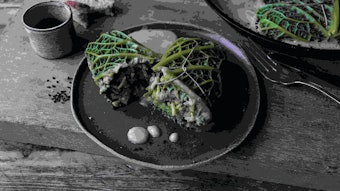The essential oil of coriander is obtained from the dried fruits of the plant Coriandrum sativum L, belonging to the family Apiaceae. It is marked by a very high percentage of linalool (approximately 70%), but the olfactory note of this monoterpene tertiary alcohol—when isolated by distillation—is quite different from the one of the purely synthetic counterpart. The special sensory effects of coriander oil have therefore always stirred the attention of flavorists and perfumers all over the world.
It is common knowledge that a great part of the annual crop of coriander seeds goes directly into classic spice blends such as the “Indian Curry” type whereas the essential oil is used for the flavoring of alcoholic beverages, candies, meat sauces and tobacco. Arctander mentions that just the use in tobacco flavors has led to the fact that coriander oil is an interesting modifier in perfumes of the “Tabac” and “Fougère” types clearly dominating the men’s line market.
With the very interesting progress of masculine notes in perfumery during the last 10 to 15 years, it was a “must” for research to look a littfe bit closer into the chemical composition of coriander oil, the estimated annual production of which lies around 100 metric tons according to the survey of B. M. Lawrence given in 1985 on the basis of a worldwide estimation. The frequent mentioning of the essence in the well-known columns of the same author reporting on progresses in the essential oil field, clearly indicates the interest to learn more about its olfactory properties, The already mentioned sensory effects must be related to trace components, because 18 main components constitute approximately 97% by weight of the total oil without giving the odor impression of coriander oil when reconstituted according to their percentages found in the natural specimen.










